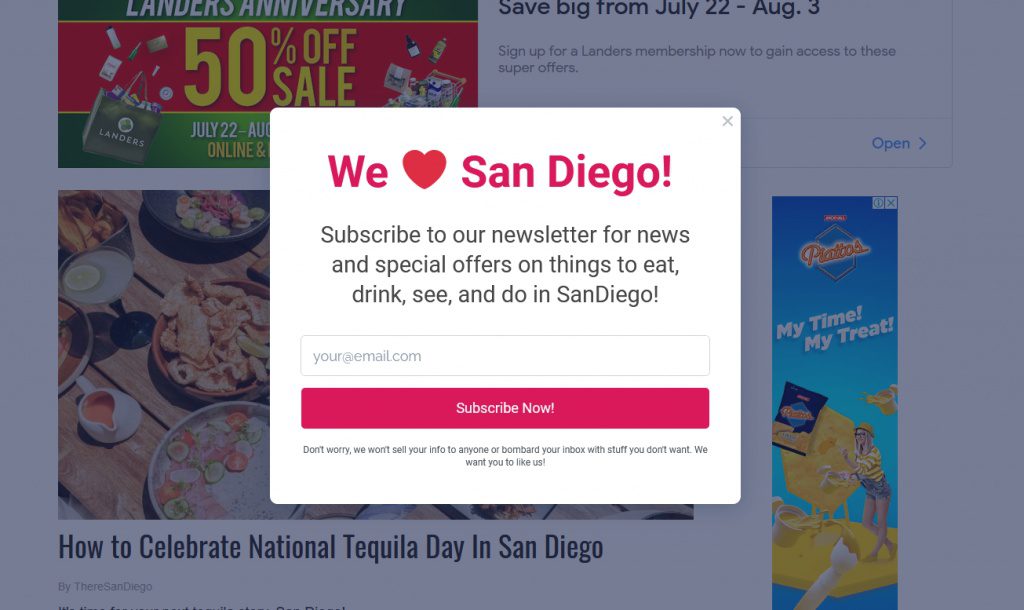One of the many marketing challenges small businesses face is trying to grow their email lists. The larger your email list is, the larger your reach and therefore the more potential purchases you will generate. But it can be hard to convince people to give you their email addresses. This is especially true with so much spam being sent.
The good news is that there are some methods, both simple and complex, that can help small businesses build their email lists.
1. Develop Compelling Content
One of the most important things to do when building an email list is to make sure that subscribers will be interested in the content you send them. After all, just the act of providing them with quality, relevant information should encourage them to sign up. This is the reason that people sign up for emails from news platforms; they want the content. You just have to figure out what that interesting content looks like for your audience.
2. Run a Contest
Creating a contest that requires submitting an email address is a simple yet very effective way of getting those addresses. The contest can be as simple or involved as you want. You can just ask for email addresses and choose one at random to get a free item or service from your store.
You can also get creative and ask people to share something else, like a photo or funny story on social media, to participate. Just remember to ask for an email address as well. When choosing the format of the contest and the prize, think about your customer base and what they likely want.

3. Try Other Freebies (Or Lead Magnets)
Contests aren’t the only type of offer that will encourage people to give you their email addresses. Offering something for free in exchange for an email address is called using a lead magnet.
Other examples include eBooks, product samples, coupons, free trials, and access to podcasts, webinars, and templates. Or give subscribers early access to features or products. Once again, think about your audience and what would appeal to them, as well as what works for your product. The best lead magnets are high-value ones.
4. Create Landing Pages
For the best results, consider making a landing page for your lead magnet or for your email list. This page should have the single goal of getting people to submit their email addresses. It keeps things simple and encourages visitors to take the desired action.
For the best results, incorporate social proof, make the copy customer-centric, and have one prominent call to action.

5. Put Pop-ups on Your Website
While pop-ups asking for an email address are annoying, they also work. This is a great way to get the attention of anyone visiting your website. You can keep the form simple and just ask for an email address to encourage them to sign up for a newsletter. Or you can use it to offer a lead magnet or announce a contest.
6. Advertise Lead Magnets on Social Media
Your website shouldn’t be the only place that you advertise your lead magnets. You also want to advertise them on social media. You can do this via posts on your social media pages as well as via paid advertising.

7. Add Social Sharing Buttons
Take a look at the emails that you send out. If you don’t already have social sharing buttons, add them. One study found that social sharing buttons may boost click-through rates up to 158%. They are great for your SEO rankings, customer experience, and attracting new potential customers.
8. Encourage Referrals
Another option is to encourage referrals and subscriptions. For example, you could set up a referral program with discounts for both the person referring and the person being referred.
9. Attend Local Events
If your business regularly attends local events, use those as an opportunity to grow your email list. You can offer attendees lead magnets, including physical freebies and those mentioned above. Anytime your company is in the public eye at an event, try to get email addresses.
10. Limit What You Ask For
People are already hesitant about sharing information online, so don’t ask them for too much. Stick to their name, email address, and of course their permission. In addition to showing that you respect their privacy and alleviating security concerns, this also means that they can sign up very quickly.
If you follow these methods to drive customers to share their email addresses, you’ll be one step closer to growing your business.





